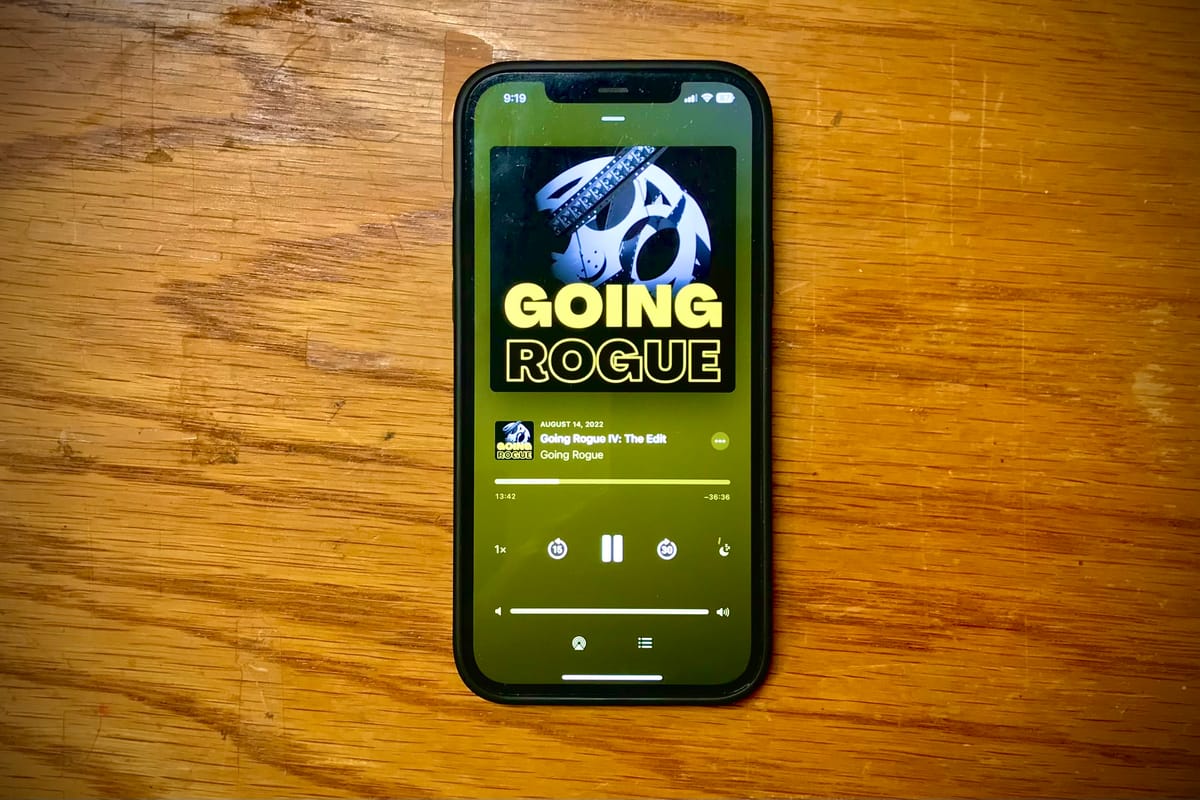Messy postmortem
An excellent podcast takes a look at Rogue One and Solo’s troubled productions

In December of 2015, I left my job at Norwich University and struck out as a freelance writer. It was a bit of a terrifying leap: I'd worked for six months at io9 as their weekend editor, and in June of 2016, I went from freelancing to full time editing at The Verge. My focus was on popular culture, and it was an exciting time to be covering film and TV: it was the moment that Disney was releasing its first Star Wars films. The Force Awakens came out in December 2015, and the first standalone film, Rogue One hit theaters a year later.
Rogue One had a famously convoluted production: in the summer of 2016, just as the publicity campaign for the film was heating up, news was breaking that Lucasfilm wasn't terribly happy with what director Gareth Edwards had shot, and was making some serious efforts to reshoot and retool the film. Ultimately, they brought in Tony Gilroy to do some rewriting and oversee the reshoots. Sitting behind the news desk, we saw some evidence of that: what we'd seen in the film's trailers was significantly different from what ended up getting released in theaters.
After the film's release in December 2016, bits and pieces of that story came out: Edwards' style as a director was a bit too chaotic and while they had a lot of footage, the story really wasn't coming together in a satisfactory way. Lucasfilm brought in Gilroy, who later cast a pretty dire picture for what that original cut of the film was.
I've never really seen a good post-mortem of the film though, and that's why I was thrilled to come across a podcast that came out back in June 2022 called Going Rogue, (h/t to Mark S. in the TO Slack channel for digging it up!) which pretty much lays out the story of how Rogue One came to be and struggled its way through production.

I have a high bar for skepticism when it comes to internet-generated reactions to Star Wars stuff, but this particular production and host Tansy Gardam seems to have done a lot of research, going through public interviews that the film's crew gave and what could be gleaned from books like The Art of Rogue One. This particular season is six episodes, covering how the film was pitched by ILM Chief creative officer John Knoll, how the script came together, how Edwards shot it, the editing process, the reshoots, and release.
The result is a pretty fascinating picture of how this film came together. Gardam editorializes a little more than I would have in something like this, but she throws in a lot of good context for how Rogue One sits in alongside the productions of other Star Wars films. I'm reminded quite a bit of the book I read recently about the MCU and how that came together and it reinforces a useful lesson: blockbusters are messy, collaborative processes, and there's a lot of improvisation and making-it-up-as-you-go filmmaking that means the film studios set out to make is a bit different from what they finish with.
I’ve spoken a lot about Rogue One, but Gardam returned for a second, four-episode season that looks at the issues with Solo, the next standalone film and why that went off the rails. This one’s a little more straight-forward: issues between the directors Phil Lord and Chris Miller and writers Jonathan and Lawrence Kasdan over their filming style, the tone of the film they were working on, and how they were wildly diverging from the screenplay. Like the first season, it’s an excellent look into how a film is made.
All in all, the show is a really interesting listen.